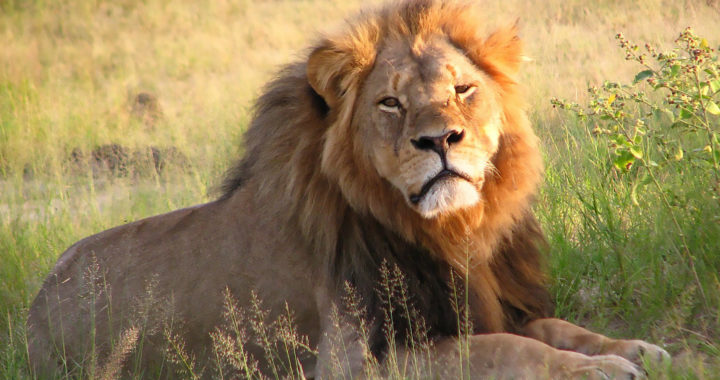Cecil was a favorite in the Hwange National Park. A team of researchers and volunteers first noticed him and his brother as a young lion in 2008 via a radar walking somewhere in the national park. Researchers believed hat two were born in 2003 and eventually left their pride to establish their respective territories—something that male lions do when they reach the age of three-and-a-half.
Note that Hwange National Park is a protected territory and game reserve in the far western corner of Zimbabwe. Researchers from the Wildlife Conservation Research Unity at the Oxford University and local volunteers have been surveying the population of lions and other animals in the national park as part of a research and conservation project that has been running since 1999.
The Colorful Life and Tragic Death of Cecil the Lion
Discovery and Sightings
Researchers named the two lions Cecil and Leander, inspired by Cecil Rhodes, a British colonialist and founder of the unrecognized Republic of Rhodesia, and Sir Leander Starr Jameson, another British colonialist who once assisted in ruling the now-inexistent state. Furthermore, the two lions were also fitted with GPS collars to track and record their movements.
Both Cecil and Leander were very nervous and reserved at first but they eventually gained more confidence to explore the expansive territory.
However, the pair encountered an established pride in 2009 that resulted in a fight. The brother of Cecil was killed and both he and the pride leader Mposu were seriously wounded. Cecil carried the scar throughout his life.
In the southern-eastern corner of the national park near the Linkwasha safari camp, Cecil finally found his abode and established his pride. Researchers and volunteers observed that the lion flourished in his territory. At one point, he even had 22 lions under him—an amazing feat considering that he was able to establish a population or size that exceeds the number of lions in a typical pride.
The proximity of the established pride territory to the Linkwasha safari camp made Cecil popular among tourists. He became the star attraction of the park and visitors who were lucky enough to spot him were able to immortalize his black-streaked mane and overall physique through thousands of photographs.
Volunteers further recalled that Cecil was naturally unafraid of humans, thus giving tourists an opportunity to observe him as he commandeered or attend to his pride.
Of course, Cecil had his fair share of struggle, especially when it comes to maintaining his dominance. Around 2012, he was displaced by two younger male lions. This forced him to move to a grassland area on the eastern fringes of the national park. However, he bounced back after teaming up with another old lion named Jericho. Although unrelated, the two formed a formidable alliance and re-established their shared pride.
Game Hunting and Murder
In July 2015, Walter James Palmer, an American dentist by profession and a game hunter from Minnesota who was on vacation in Zimbabwe, reportedly paid another hunter, Theo Bronkhorst, USD 50,000 to enable him to kill a lion.
Cecil was the chosen prey for Palmer. The lion was believed to be lured out of the sanctuary where he was shot and wounded with a crossbow arrow.
Researchers noticed that Cecil was beginning to spend a lot of time outside the boundary of Hwange National Park before his luring. They believed that this was where the lion was lured by poachers using a dead animal dragged on the back of a pick-up truck as bait. The poachers placed the bait under a spotlight so that Cecil could further recognize it.
Once lured, Palmer hunted Cecil and once found, shot him with a rifle. The lion died. He was then skinned and his head was removed. His tracking collar was missing from the carcass.
A global outcry broke following the identification of Walter and internet users were quick to condemn the American dentist. Animal conservationists, the public, and several politicians have pressed for justice. There have also been several calls to ban the importation of game trophies to the United States and the issuance of hunting permits for endangered animals in Zimbabwe.
Walter maintained that he was not aware that his actions were illegal. His statement explained that he believed his guides had secured all necessary permits for the hunt and relied on the expertise of the locals. He expressed his regret but maintained that he has been hunting legally and responsibly for a very long time. He was also unaware that Cecil was popular among tourists.
The death of Cecil the Lion renewed calls against trophy hunting while also raising global awareness about the moral problems of hunting wild animals for fun.
